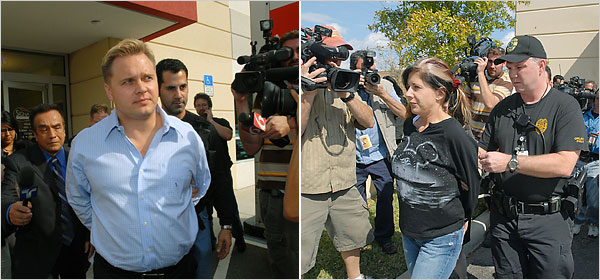Brendan Lyons and the Albany Times-Union have received a lot of praise and acclaim for their “investigative journalism” in the coverage of the Signature Pharmacy steroid distribution scandal. Admittedly, they do a throrough job of covering the Albany-based investigation initiated by District Attorney David Soares. But the reporting is anything but well-balanced serving as little more than a public relations branch of the Albany County District Attorney’s Office.
I do not understand how becoming the bedfellow of a publicity-seeking prosecutor David Soares and the unofficial Albany County District Attorney Office PR agent qualifies as “investigative reporting.” Does this represent the current state of what is valued in investigative journalism? (“Investigative journalism still thriving in Albany,” April 2)
So how did this lone journalist from a mid-sized, out-of-state paper beat all the local and national powerhouses on such a major story? And perhaps more importantly, why did he bother?
The answer lies in the origins of the 2006 steroid case, which actually began in the Albany County District Attorney’s Office — a place Lyons knows well from years of crime reporting for the TU. As the investigation led to Florida and several other states, Lyons was well-positioned to get advance word of the raid. Since then, he has broken multiple follows, including a report in January revealing that numerous stars, from singers Mary J. Blige and 50 Cent to Danny Bonaduce, were linked to the pharmacy.
Apparently making deals to aggressively promote the local district attorney is the key to investigative reporting.
“I approached the DA, and he put me off for a while,” Lyons says. “Then he explained that they were in the throes of a multi-state investigation that would resonate from that office.”
Further digging found that the Orlando site was next. “I started working sources to find out as much as I could,” he says. “I found out that some celebrity athletes were involved.” Names such as boxer Evander Holyfield arose, and Lyons learned a big raid was in the works. But he did not report it, as investigators requested he hold off.
Lyons deludes himself into believing he was involved in serious investigative journalism by fancying himself as a real journalist surrounded by danger in a hostile military environment covering a significant military operation. As Lyons tells the story, coverage of the war on steroids is analagous to the war on terrorism in many ways.
“I thought it was no different than being embedded with a military unit that was going to raid Kirkuk tomorrow,” Lyons says. “The pitch was, ‘If you publish it, they could potentially destroy records and computer files.'” Then Lyons learned that Sports Illustrated was also on the story. “I knew they were being given the same request to hold off,” he recalls. “And the clock was ticking.
“We knew some things and could have moderately reported it,” Port adds. “But if we had done it, we would have ruined their investigative plans, and they made a case that was true. The deal was, when it happened, we would report the heck out of it.”
Thus, Brendan Lyons and the Albany Times-Union entered into a deal with District Attorney David Soares that has greatly benefitted both parties. The seemingly quid pro quo relationship has worked well from the beginning when prosecutor Soares invited Brendan Lyons and a Times-Union photographer to take lots of pictures during a raid that was clearly unnecessary and designed only as a photo op and publish “the heck out of it” (Soares, Steroids and Albany, March 2, 2007).
The Florida defense attorney said in a video clip that the suspects were aware of the investigation and offered several times to turn themselves in. David rejected their offer because he wanted to fly down to Florida with a camera crew. Now we are stuck not only with the cost of David’s trip but also with the transportation costs of bringing the suspects up to Albany. In addition to two assistants, David invited a Times Union reporter and photographer on these out of state raids. This doesn’t look good and it appears that David is playing for publicity.
It is my opinion that we need much higher standards for what qualifies as investigative journalism.
About the author
Millard writes about anabolic steroids and performance enhancing drugs and their use and impact in sport and society. He discusses the medical and non-medical uses of anabolic-androgenic steroids while advocating a harm reduction approach to steroid education.


2 replies
Loading new replies...
Join the full discussion at the MESO-Rx →